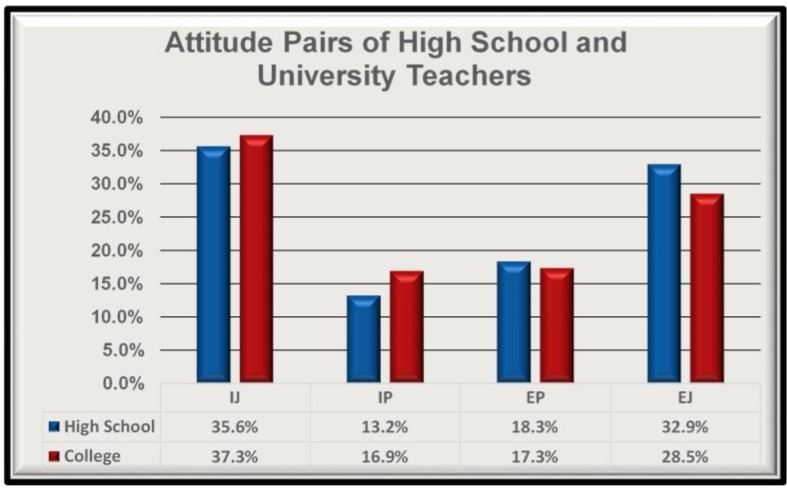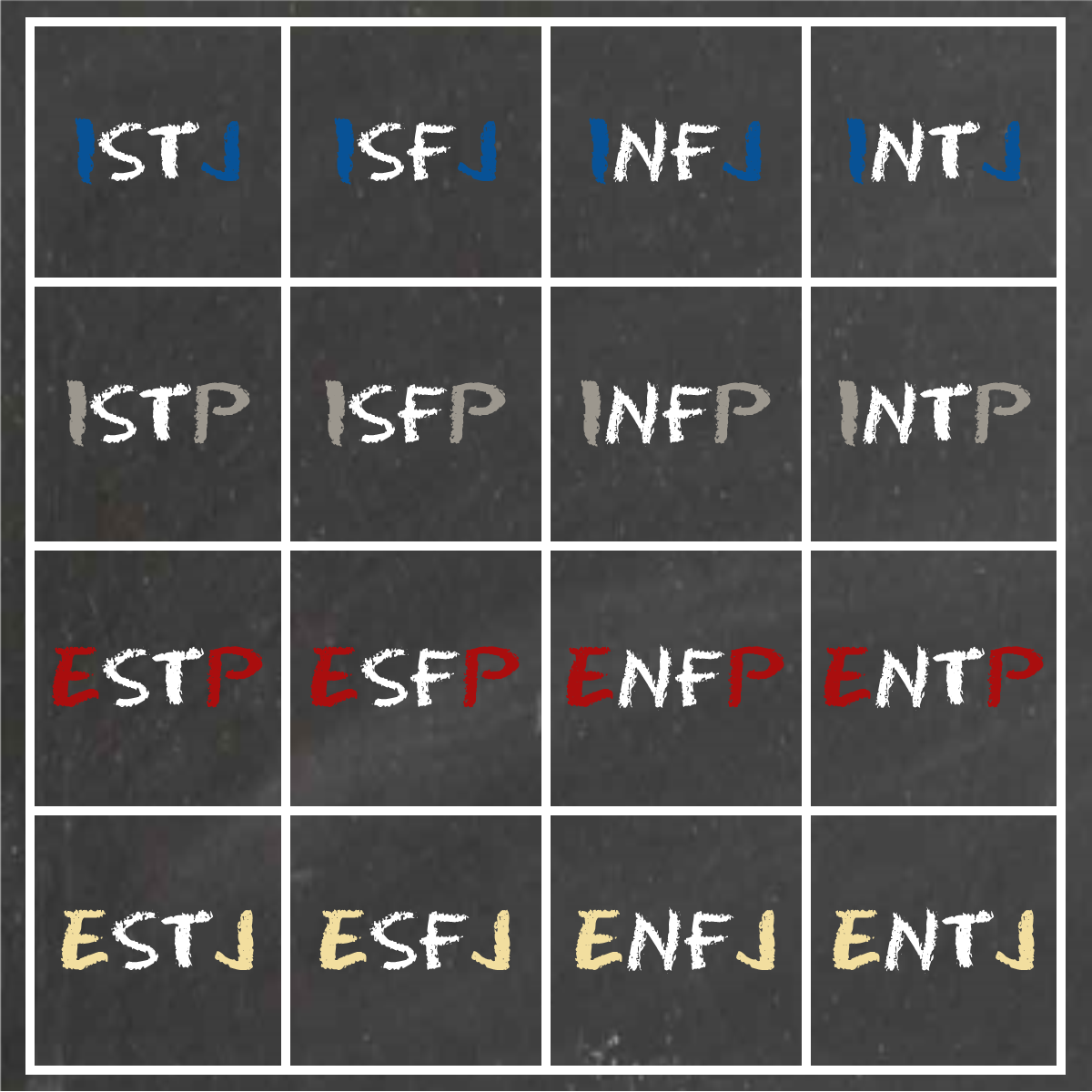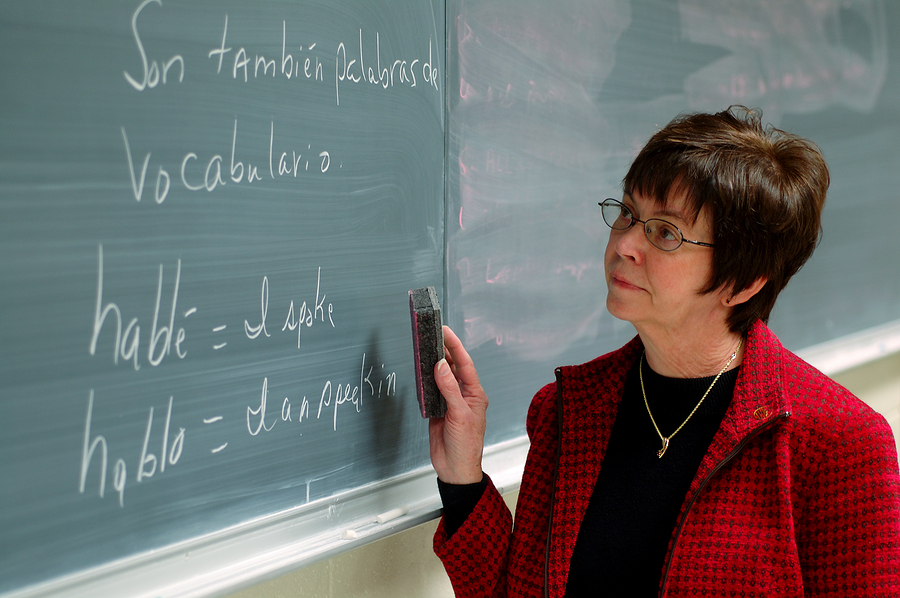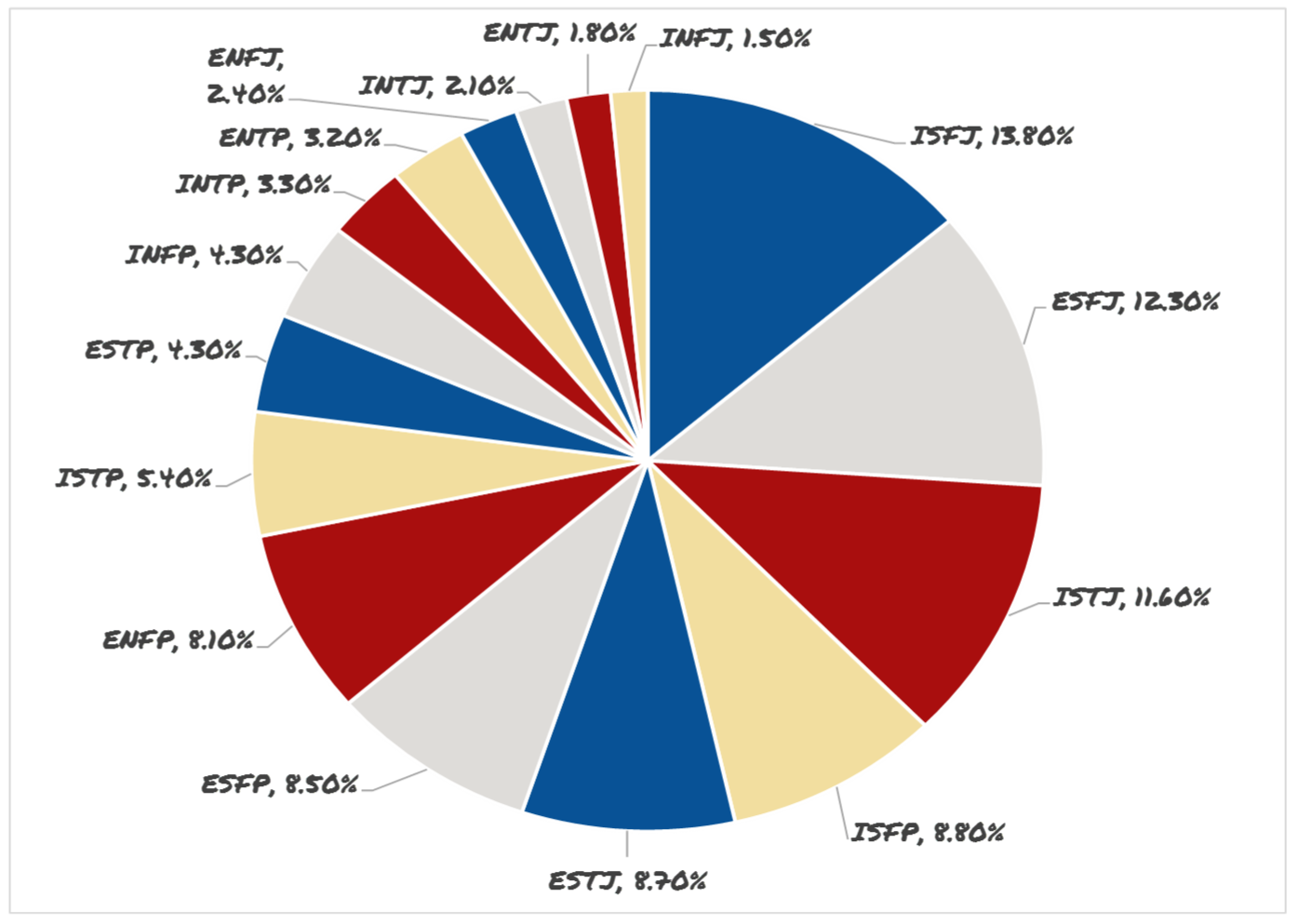
If you’ve been to college or talked about going to college, you’ve probably heard someone say that college is different and/or harder than high school. You often hear about having to develop your own strategy for time management or how hard the tests and classes are. Perhaps you have heard about all nighter study sessions and endless reading, but you may have also heard that teachers are different in college.
Of course, some teaching differences may largely be due to the fact that K-12 teachers are trained in teaching (and perhaps a specific discipline), while most college professors are trained to a very high level in a specific discipline without necessarily ever having specific training in teaching.
That being said, there may also be personality reasons for differences in teachers from K-12 to college. Perhaps, most notably, is the fact that the percentage of SF teachers/professors drops drastically from high school to college, and the percentage of NT teachers/professors increases drastically from high school to college. While this article speaks only to high school and university teachers, there are even more drastic differences when looking at elementary and middle schools, as well as breaking down all 16 types.
The chart below shows percentages of the 4 function pairs in teaching, as well as characteristics of each function pair in the classroom.
| STs | SFs | NFs | NTs |
|---|---|---|---|
| •Make up 25.8% of high school teachers. | •Make up 23.9% of high school teachers. | •Make up 34.2% of high school teachers. | •Make up 16.1% of high school teachers. |
| •Make up 22.2% of university professors. | •Make up 13.9% of university professors. | •Make up 32.7% of university professors. | •Make up 31.2% of university professors. |
| •Believe their job in the classroom is to lead by example and share that they know and what they have learned through first hand, life experience. | •Believe their job in the classroom is to provide a good balance of encouragement, discipline, structure, and support through instruction, while leading by example. | •Believe their job in the classroom is to help student want to strive for their potential, while providing space and genuine encouragement to create and grow. | •Believe their job in the classroom is to motivate, challenge, and inspire students to become the best people they can possibly be. |
| •Typically teach by following meticulous lesson plans, that are aimed at specific learning objectives, and by following established daily routines. | •Typically teach by following meticulous lesson plans, aimed at specific learning objectives, while leaving room to teach in a way that suits individual student needs, and they follow routines that allow time for personal attention. | •Typically teach by following gisty lesson plans that begin with themes in mind and can grow over time to meet the needs and interests of the class, while following a flexible classroom structure that allows for individual needs. | •Typically teach by making a plan for the year, which is gisty and arranged around themes that challenge the students academically, while keeping a flexible classroom schedule that provides clear expectations for engagement in learning. |
| •Tend to teach from well established and proven text books, manuals, and personal experience that lends itself to avoiding pitfalls to become more successful. | •Tend to teach from well established and proven text books, manuals, what they have found to work for other teachers, and personal experience. | •Tend to teach from ideas that may have been pulled from the ether, or may have come from reading, familiar concepts, or an understanding of the class and where they are developmentally. | •Tend to teach from concepts in which they have expertise that they deem necessary for the students to succeed, and the synergy of knowledge they have gained from other places. |
| •Often grade in a way that uses a consistent system of numbers and data, and consider themselves successful when those numbers increase. | •Often grade in a way that uses a consistent system of numbers, with the addition of extra credit opportunities, and consider themselves successful when those numbers increase and they feel they have made a positive mark on the students. | •Often grade in a way that takes into account more than just numbers (aka. effort, aptitude, etc.), and consider themselves successful when the students become more engaged and they feel they have made a positive mark. | •Often grade in a way that takes into account more than just numbers (aka. effort, aptitude, etc.), and consider themselves successful when the students become more engaged in the learning process. |
After reading these descriptions, you may have some thoughts about the types of your instructors. Perhaps, you are wishing that you had professors of certain types, or perhaps you are wondering if the best bet would be to have professors of your exact type. Hopefully gives you some solace that the professor who always seems to challenge you may not, in fact, hate your guts or gives you the passing thought that the teacher who gives lots of personal examples is not incompetent just because of going on tangents you find irrelevant. That being said, if all of your teachers in life were just like you, how would you learn about the rest of the world? How would you be prepared to have a boss who is completely different than you are? Tough as it may be, a certain amount of adversity facilitates learning, and hopefully you have at least some people in your life who share your wavelength.
In later articles, we will look at teaching and attitude pairs. If you are interested in reading more about learning and teaching, check out People Types and Tiger Stripes by Gordon Lawrence, which was used as a reference in this article. You can also read Classroom Learning of the 16 Types, as well as the 16 type descriptions. As always, thank you for reading.








Pingback: Criticize the personality type above you! - Page 3232
I was hoping to see some kind of breakdown between introverted thinkers and extraverted thinkers.